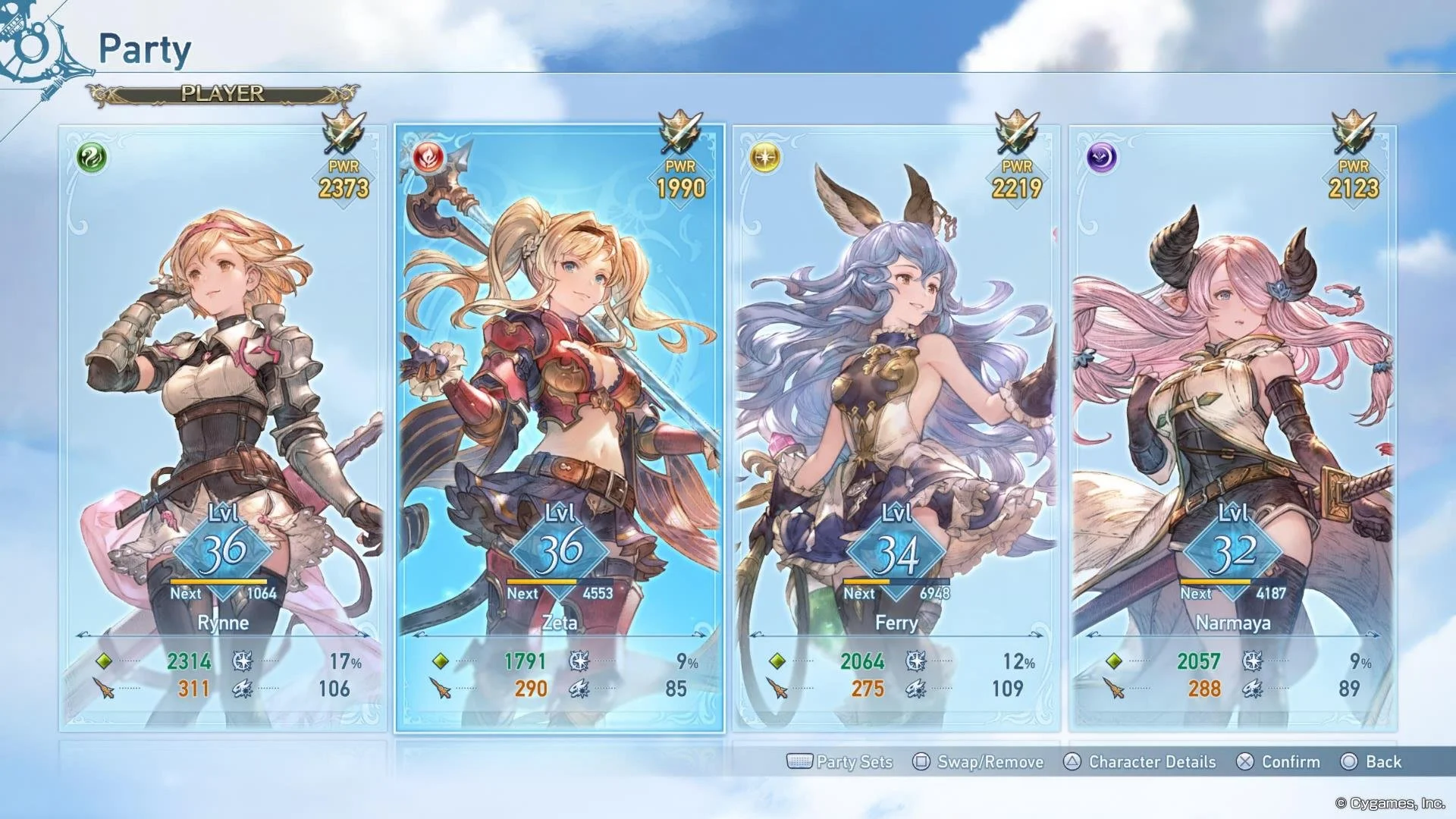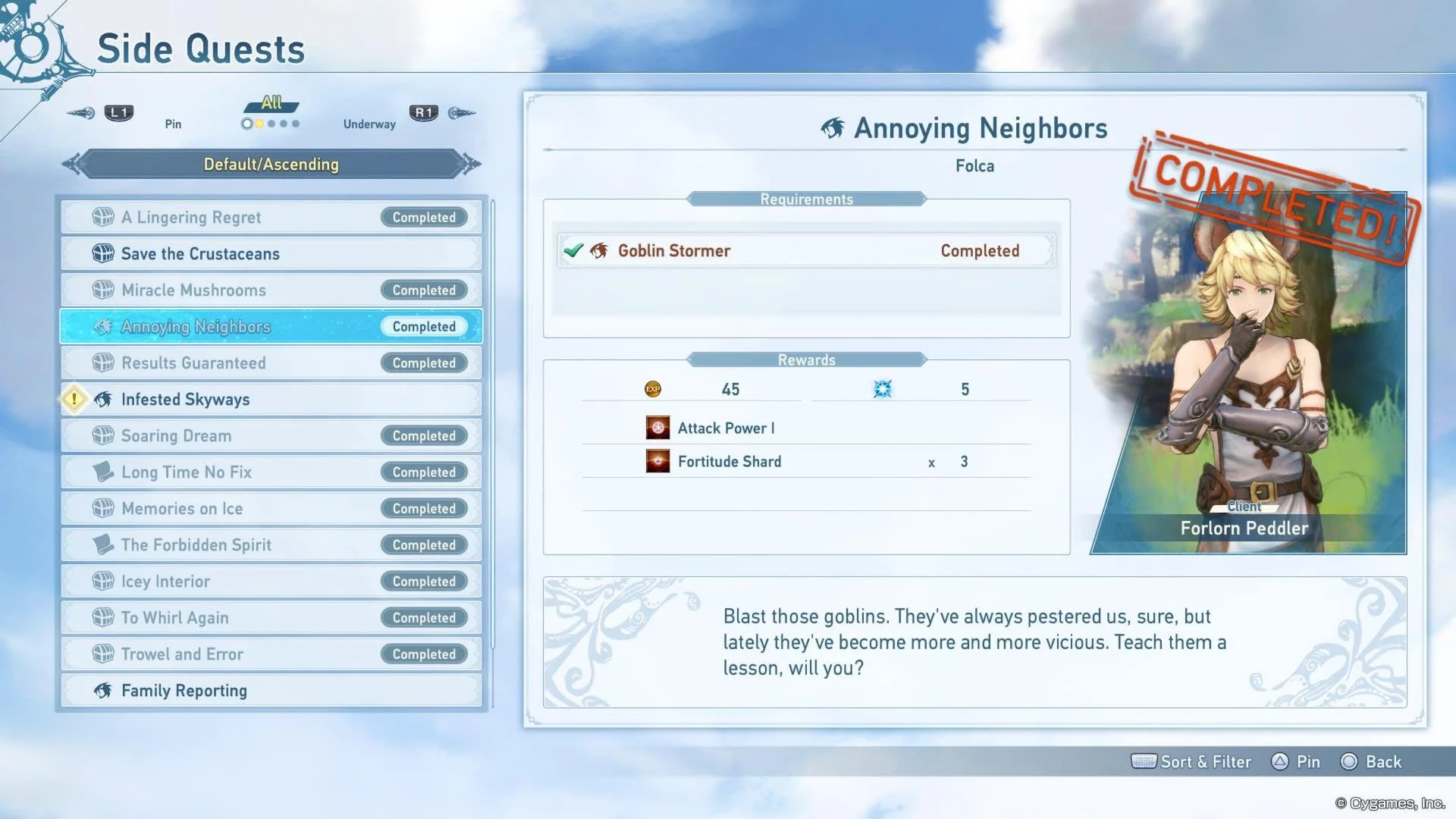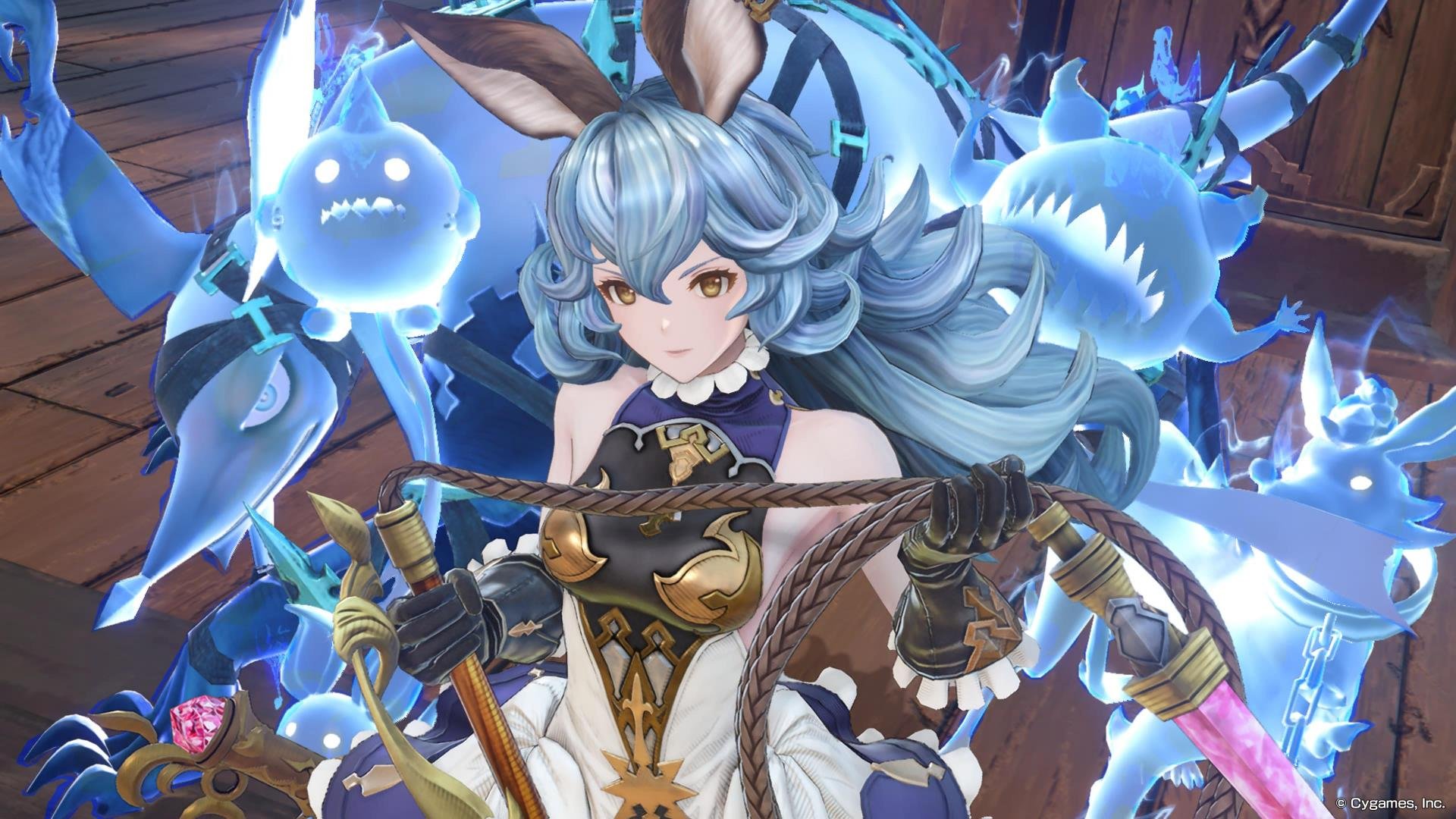Into the wild blue frontier.
As someone entirely new to Granblue, I came to Relink based on how much I enjoyed its demo. I was aware of the anime, the fighting game, and to a lesser extent, the mobile game, but each were experiences I just never engaged with. However, Relink does a great job explaining its back story, its rich tapestry of characters, and the world they inhabit. And to be honest, Relink reminded me a great deal of Tales of Arise, both in how it approached combat and the strong visual style of its world. As I hit the credits after about a bit over 25 hours, with double that its post-game, I walked away with it being one of my favorite JRPGs in recent memory, even enjoying it slightly more than a certain other “Re” JRPG to release this year.
From the surface, Relink looks to be a fairly straightforward adventure; however, it has a level of depth that finds itself wearing its influences close to its chest, offering just enough content and mechanics to deepen its fast-paced gameplay. It never felt overwhelming, and allows each of its systems to feel important. And given that Platinum Games originally helped out with development before leaving in 2019, their fingerprint is nonetheless present here in some of the game’s best qualities. Relink feels digestible and fun without feeling like a chore of boring moments, open-world busywork, or convoluted systems that plague a wealth of JRPGs. Everything feels purposeful, lean, and consistently engaging.
Relink has you choosing your lead protagonist between the titular Gran and his female counterpart in Djeeta, whose name is derived from the “Tasy”, which is also part of the game’s title, thus bookending the ‘Gran’blue Fan’tasy’ title between the pair. What is interesting about choosing your hero is that you can, at any time, switch back and forth. While each will gain an additional costume around chapter 5, completing the game will allow you to change their outfit’s colors and even revert back to their more plain early-game gear. In addition, you can then change the colors of the outfits for each of your wealth of companions.
Now, in my opinion, the game's only significant misstep is those very companions, but not in the way you think. While you'll have a decently sized ensemble of characters, your main party can only consist of four characters at once. Each companion has a series of visual novel-like personal stories that occasionally have a deployable mission where you take control of them. Each of these story moments also grants stat boosts, so it's extremely worthwhile to do, even if you just want to skip all the dialogue. These stories are fairly well executed, with a few boring ones, but they are complete with the character narrating these moments.
However, what disappoints me is the companions you can recruit through a ticket system. Throughout the campaign, you'll earn these blue tickets and unlock a character you want. There are over a dozen to choose from, each from various points in the Granblue series. However, these characters do not appear in or impact the story at all. You'll have combat dialogue for them, but other than that, they don't appear in any of the cutscenes, even as just a background element; it's as if they just don't exist.
Your main team fills in a decent crop of personalities and roles, allowing you to find the team composition you want, all led by either Gran or Djeeta, each dubbed the “Captain”. You can name your character, but that name only appears in worded dialogue and is spoken as “Captain”. Your main cast consists of Katalina, Rackam, Io, Rosetta, Eugen, and Lyria, all of whom have their own moments across the campaign. That said, most of the story is very focused on your lead, especially given your connection to Lyria, who controls the powerful Bahamut as well as shares her life force with the Captain, an event that took place during the mobile game. And don't worry, those character missions? They explain all of it.
Throughout the story, you'll be joined by Rolan, who while isn't playable, has a sizable impact on the story. The adventure begins with you and your crew attempting to find the legendary island of Estalucia, the land of an ancient race called the Astrals. However; you soon find yourself overwhelmed by powerful forces and Lyria is abducted by a woman named Lilith. This woman leads the Pilgrims of Avia, as she inspires to guide them to this ancient land as well. As Lyria is apparently the key to finding this utopia, the Captain and her ever-growing crew will stop at nothing to get her back.
In typical fashion, the story has a few decent twists and turns, all conveyed with some extremely well-directed cutscenes and voicework. While Lilith can feel a tad one-dimensional, those around her are not. Her generals: Gallanza, Maglielle, and Id, are characters that have some decent depth to them, at least through pivotal parts of story. They can initially come across as pretty stereotypical, but are fleshed out as the story progresses, especially in the final push; Id especially.
Even after your journey comes to an end, Relink has a pretty sizable endgame that grants you access to a new character to your party, one that will take on a series of quests to prove themselves. This revolves around taking on bite-size missions, which are of the same type you'll have access to throughout the game. These missions; however, are required to be pushed through on increasing the difficulty as they are not available on Easy or Normal. You'll move between Hard and Very Hard as you attempt to resolve a key moment from the game's finale. And honestly, it's a satisfying hook that makes this endgame have some teeth and not just be a series of generic missions; there are actual stakes.
Leading up to its release, many were comparing Relink to Monster Hunter, given the short-burst nature of these side missions. While the comparison is sort of loose, given you are not really hunting nor carving off physical pieces off any of its bosses, you are still gathering materials, monster parts, and resources to craft and upgrade your weapons. Some parts are rarer and only available on certain difficulties, making procuring them to be a tad more challenging. I wrapped credits on the main story at around level 60, making hard and then very hard to be just the right level of difficulty for what my team was ready to face. Still, you do need to grind a bit to level up your team, especially that newcomer.
Now, all the parts, pieces, and resources, are used to level up and craft new weapons and increase the efficiency of your sigils, which are technically materia-like orbs. Each character has a few different weapons to unlock and craft as you progress throughout the story. Each can be upgraded to a certain max level, which then in turn requires additional resources to further push that level-cap further. Sigils, as mentioned, are orbs that you slot into your character. The visual-novel deployable missions are used to increase the amount of slots you can use, so doing them will allow you to equip more Sigils. These items can boost your attack power, health, Critical attacks, Stun-power, and a few dozen other enhancements, allow you to tailor your character to what you want from them.
Early on, you’ll unlock Siero, a shopkeeper where you’ll recruit new characters, transmute Sigils, and purchase a wealth of resources for crafting. They will show up in each of the major towns and you can access parts of their store from the saving stones you’ll find throughout your journey. They are also where you can access any DLC you have as well. Later on, you’ll be able to exchange items called Dalia Badges for some late-game items, such as level 5 Sigils, which are insanely powerful.
Each of the major towns has a Quest Counter, this is where you’ll take on a series of missions. These are largely shorter affairs that you’ll be scored on. The Quest Counter is also where you’ll access the Fate Episodes, which are those visual-novel side-missions. Once you’ve completed the game, you can also choose a chapter to replay, in case you’ve missed anything on your first go-around.
Missions have secondary objectives that boost your score as well as grant you additional rewards. These range from killing a set number of enemies, and preventing yourself from falling in battle, to killing enemies with thrown objects. This is also where co-op plays a hand in allowing you to take on these missions with friends. Co-op is only for these missions, unfortunately and is not part of the main story, which is the only downside to its multiplayer component. The quests are fine as they are, but lack the explorable depth of the main story missions. Often, they are just a few rooms and a boss, if that.
Coming from Final Fantasy VII: Rebirth, it was refreshing to play a very straightforward JRPG again, one that reminded me a great deal of Tales of Arise. While areas are spacious, colorful, and vast, they are very linear, and not filled with any real side activities or minigames. While there are side quests, these are largely passive without objective markers of prompts stating that you've completed them. And should you be in the town of a particular request, you can fast travel right to the quest-giver. Story missions have some variety with controlling a giant robot or using laser cannons on your flying boat, but these distractions are used sparingly and feel genuinely rewarding when they do happen. While Rebirth’s world was gorgeous in its own way, It felt big for big’s sake, overstuffed with busy work and a lack of focus. Here, Relink is built to admire the world, take part in a series of battles, and move on. Each of these approaches can work, but I'm glad that Relink chose this path as it is far more digestible.
Combat is real-time, meaning it is very action-focused. You’ll have a main strike with Square and a more powerful unique attack with Triangle. X is jump and Circle is your Link attack. You’ll dodge with R2 and activate a series of four skills that you’ll equip from several as you unlock them. Add in a lock-on and a guard, and you get the idea of what to expect here. Characters also have a flashy special attack called a Skybound Art, which when pulled off alongside your team, can see them happen one after another, resulting in a combined attack at the end.
During combat, you’ll heavily rely on Link attacks. These occur when you fill up an enemy's stun gauge, which can be done by simply attacking and using skills. These attacks also change up your Link Level and can transition into your normal combo attacks. Once a blue effect is visible, you can press Circle to then dash to that enemy to perform the Link attack. Your Link Level is a percent mechanic that increases as you perform Link attacks. When a Link Level hits 100%, and you perform Link Attacks, you enter what is called Link Time. This mechanic allows all party members to then perform a Link attack on an enemy whose stun gauge is full. This lasts for a set period, which then bestows a few benefits such as increase attack and a reduction to your cooldowns.
While not directly involved with combat, you’ll spend a skill currency to develop your character’s masteries, which then influence combat by making your character stronger, and more resilient, and unlocking new and exciting skills. This currency is shared, so you can then develop the team you desire the most. This is where the game can be rather grindy should you want to level up and work on each individual character. The mastery skill tree consists of offense, defense, and collection, which are your weapons. The mastery skill tree is extensive as it features dozens upon dozens of nodes for each character, making it a huge time-sink, should you want to invest in it.
Granblue Fantasy: Relink’s visuals are more aesthetically pleasing than that of extreme graphic fidelity. Characters have a cel-shared look to them that again, reminds me a lot of what Tales of Arise was doing back when it was released. The world and its cast are bright, cheerful, and colorful, and can be a very eye-pleasing experience, given you understand that not every JRPG is going to have Final Fantasy VII Remake/Rebirth levels of money. Personally, I find this aesthetic to be far more impressive as it gives the game a timeless look.
Granblue Fantasy: Relink brought an engaging story with incredibly fun combat to the forefront, packed with a ton of secondary missions that allow you to get the most out of your team, especially in co-op. While some grind can set in through this, the wealth of characters, which is set to increase with a free update in May, allows for you to swap to a fresh new personality with an entirely new combat approach. Relink has me continuing to better my team, explore new characters, and push through its endgame, a feat I normally don't tackle when it comes to extending my time with a game. Relink has made me a Granblue fan, so maybe I will check out that fighting game and mobile prequel after all.
Developer - Osaka Cygames. Publisher - Cygames Released - February 1st, 2024. Available On - PlayStation 4, 5, PC. Rated - (T) Language, Mild Suggestive Themes, Violence. Platform Reviewed - PlayStation 5. Review Access - Granblue Fantasy: Relink was purchased for review.


















Jeff is the original founder of Analog Stick Gaming. His favorite games include The Witcher III, the Mass Effect Trilogy, Hi-Fi Rush, Stellar Blade, Hellbade: Senua’s Sacrifice, and the Legend of Heroes series, especially Trails of Cold Steel III & IV.